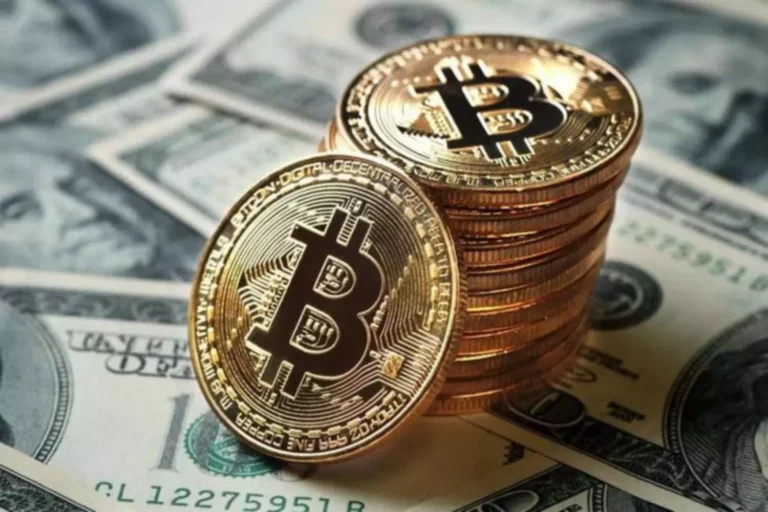Bridging Vs Chain Abstraction: A Deep Dive
Instances of unauthorised use or replica of digital content material can threaten the rights of creators and the authenticity of NFTs. Smart contracts, whereas blockchain bridges providing automated royalty distribution, may not absolutely address the complex panorama of intellectual property regulation. As the NFT ecosystem expands, the need for clear frameworks and solutions to safeguard the rights of creators and tackle IP challenges becomes more and more pressing.
The Challenges And Opportunities Of Blockchain Interoperability
North Korea, particularly, is dealing with scrutiny for its alleged function in these illicit actions. The escalating threats are compelling nations and multilateral institutions to collaborate and establish protecting measures. Just over a month later, on March 23, 2022, the Ronin Network bridge — Axie Infinity’s Ethereum-based sidechain — was hacked for over $620 million, and on Aug. 2, the Nomad bridge was hacked for over $190 million. The NFT market has witnessed unprecedented progress, however with it comes the spectre of market hypothesis and bubbles. The surge in demand for digital collectables and artwork has led to cases of inflated valuations, reminiscent of traditional market bubbles. Investors, driven by the attract of fast income, might contribute to a speculative environment, doubtlessly resulting in market distortions and sudden corrections.
Defi Safety: How Trustless Bridges Can Help Defend Users

Governments and regulatory our bodies worldwide grapple with defining frameworks to manipulate this decentralised monetary ecosystem. Issues similar to anti-money laundering (AML) and combating the financing of terrorism (CFT) present challenges for the trade to deal with. Regulatory uncertainty impacts market sentiment and may impression the adoption and development of cryptocurrencies. The replication of knowledge between blockchains or the execution of operations topic to data disclosed on one other blockchain are two examples of this sort of data transmission. A source blockchain and a target blockchain are needed for communication between the 2 blockchains.
All About Bridge Safety In Defi And High 10 Reasons Why It’s Important
Smart contracts automate processes, while blockchain’s cryptographic features ensure information integrity and confidentiality, transforming traditional banking operations. The absence of requirements among varied blockchain networks is one of the largest obstacles to blockchain interoperability. Since the inception of blockchain methods, a quantity of protocols have come into place with everybody having some distinctive tips and operational requirements. Therefore, it turns into difficult for most builders and corporations to know the standards needed by means of compliance. This goes to prove very useful as till dare there aren’t any normal interoperability requirements. This makes it challenging for various blockchain networks to communicate with one another and share information.
- Then the best would be to associate with a blockchain infrastructure administration platform.
- Financial business and fintech firms can now supply simply accessible digital info, saving time and simplifying the auditing course of.
- Trustless bridges can provide a safer answer for bridging assets throughout blockchains provided that the sensible contract code has been absolutely audited to ensure no vulnerabilities are current.
- None of the primary papers suggest their further implications to safety and privateness issues.
Understanding Blockchain Bridges
Zero-knowledge proofs and different cryptographic strategies can be utilized to protect sensitive data while nonetheless sustaining the transparency benefits of blockchain. Adopting standardized protocols and APIs can facilitate interoperability between blockchain and legacy systems. Banks also can take part in trade consortia that focus on creating interoperable blockchain solutions. In addition, investing in middleware options that bridge the hole between completely different systems can help banks integrate blockchain more seamlessly. The decentralised finance sector depends heavily on cross-chain integration to enable the borrowing, lending, and trading of property throughout multiple blockchains.
Alternatives For Blockchain Interoperability
The FBI’s identification of the perpetrators underscores the continuing global menace posed by state-sponsored hacking groups within the cryptocurrency ecosystem, necessitating heightened cybersecurity measures. The 2018 attack on the Japanese cryptocurrency change Coincheck, siphoning off US$530 million, stays unresolved in terms of figuring out the perpetrators. However, South Korea’s National Intelligence Service suggested North Korea’s potential involvement.
Applications Beyond Cryptocurrencies
In addition, we’ve summarized the state-of-the-art mitigation in opposition to the recognized vulnerabilities and the restrictions of the mitigation. Blockchain bridges supply unique options and adaptations that contribute to the growth of blockchain technology. They enable fluid switching between blockchain networks, benefiting investors, builders, and users. Blockchain bridges present alternatives for person progress, asset production, transfer, and scalability. They additionally lower transaction fees and enhance pace, especially with layer two solutions.

How May Cross-chain Bridges And Interoperability Protocols Evolve Within The Future?
Cross-chain integration seeks to break down these barriers by making a bridge between blockchain networks, enabling them to change information, property, and even functionality. This signifies that transactions and sensible contracts executed on one blockchain can set off actions on another, creating a more linked and versatile blockchain ecosystem. According to MarketsandMarkets the global blockchain market was round $7.4 billion in 2022 and is about to generate revenue of over $94 billion by the tip of 2027 with a compound annual progress fee (CAGR) of 66.2%. At the heart of blockchain technology lies a set of core ideas that revolutionise traditional strategies of knowledge administration and transaction verification. The decentralised and distributed nature of blockchains ensures that information is saved throughout a network of nodes, enhancing transparency and reducing the danger of tampering. The use of consensus mechanisms, corresponding to proof-of-work or proof-of-stake, adds an additional layer of security by validating transactions by way of network participation.
As the DeFi ecosystem continues to grow and evolve, it has the potential to disrupt conventional finance and democratize access to financial assets on a world scale. Low-fee and high-performance blockchains are especially helpful to Web3 gaming initiatives and microtransactions. Wormhole, the favored bridge between Solana and Ethereum, additionally come underneath hearth in February 2022.
Simply, if there’s a flaw within the good contract, it’s virtually certain that parties with malicious intentions will attempt to use it. The legendary consensus mechanism, such as the Proof-of-work & the Proof-of-stake, doesn’t work properly with enterprise blockchain management. Some notable enterprise blockchain networks are Corda, Hyperledger, Tezos, and plenty of more. While we won’t delve into the primary points of how every safety measure works, suffice it to say that they provide certified authority to networks for asserting a selected IP address vary. However, the issue is that not all internet providers for bridge services have fully implemented these security measures.
The system solely helps heterogeneous (public and private) blockchains on the Ethereum platform, and not hybrid systems, such as Bitcoin. Blockchain bridges are essential in achieving interoperability and enhancing the person expertise inside the web3 ecosystem. They allow seamless asset transfers and interactions between different blockchain networks, permitting developers to overcome roadblocks and leverage the advantages of multiple networks. Bridge safety in DeFi refers to the measures taken to make sure the protection and integrity of assets transferred between totally different blockchain networks or protocols. Bridges serve as connectors that allow the seamless movement of belongings, corresponding to tokens or cryptocurrencies, across disparate blockchain ecosystems.
Read more about https://www.xcritical.in/ here.
